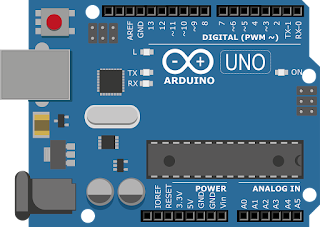You might have heard about Arduino, BeagleBone, Raspberry Pi or PCDuino. But do you actually know the differences between these boards. Well you've come to a right place.
What's the difference?
The Arduino, Raspberry Pi, BeagleBone and PCDuino may look very comparative for you, however they are in certainty altogether different gadgets.
The Arduino is a microcontroller. A microcontroller is only one little piece of a PC. The arduino can be modified in C, yet can't run a working OS(Operating System).
Then again, the Rasperry Pi and PCDuino are PCs. Those gadgets can run a working OS(Operating System) alone.
1. Arduino
The Arduino is just ideal for gadgets ventures and prototyping. You can simple associate some LED's, sensors, engines into the board straightforwardly. With their easy to use board it simple. To program the Arduino you require their product. Essentially with that product you can transfer your source code straightforwardly into your Arduino through USB.
After you transfer the Arduino code you can unplug the USB link join a battery to your Arduino Board and It will run your program until the end of time.
The core of the Arduino is ATMega3280P microcontroller.
Specifications:
Microcontroller : ATmega328
Operating Voltage : 5V
Input Voltage (Recommended) : 7-12V
Digital I or O Pins 14 (of which 6 provide PWM output)
Flash memory 32 KB (ATmega328) of which 0.5 KB used by bootloader SRAM 2 KB (ATmega328)
Buy it from here.
2. BeagleBone
It's like a Raspberry Pi yet It's all the more effective, Based on the TI Sitara AM335x, an application processor SoC containing an ARM Cortex-A8 center. You have more sticks to control. They as of late won "2013 Top Embedded Innovator grant".
The BeagleBoard people group is ideal for engineers and specialists.
Specifications:
Voltage : 5V
Wattage : 5W
Operating system : Android, Linux, Debian Linux
Processor count : 720
Memory type : DDR3 SD RAM
Buy it from here.
3. Raspberry Pi
The Raspberry Pi is a total smaller than usual PC. It needs a working OS(Operating System) to work. All the Storage is given from a SD card. You can associate this to your system with an Ethernet Cable.
It has designs it has a HDMI yield. You can connect to a console and screen, stack up Linux, and the less in fact keen may do not understand how modest the machine driving everything truly is. The Pi is a staggeringly effective stage in a little bundle it's Visa measured and ideal for inserted OS, or activities requiring greater intuitiveness and preparing power.
Specifications:
Voltage : 5V
RAM : 1 GB
Processor count : 4
Operating System :Ubuntu Mate, Snappy Ubuntu, Linux and many more.
Buy it from here.
4. PCDuino
This board is like the Raspberry Pi, it's getting to be noticeably similar to the new selection of engineers. It has every one of the highlights of the Raspberry Pi yet it's all the more capable. Which at last makes it more costly. It as of now accompanies 2GB of glimmer memory. Furthermore, you can add a SD card up to 32GB. Which is a truly advantage over the Rpi.
Specifications:
1 GB DRAM
Onboard Storage: 4GB Flash
CPU: AllWinner A20 SoC 1GHz ARM Cortex A7 Dual Core
GPU: OpenGL ES2.0, OpenVG 1.1 Mali 400 Dual Core
Buy it from here.
All things considered, the Arduino is ideal for fledglings. Alternate sheets are altogether more unpredictable for basic hardware ventures. For instance, on the Arduino, flickering a LED is basic as interfacing a LED and resistor to two Arduino pins, introducing their IDE. at that point transferring a couple of lines of code. It's finished. On the sheets are more muddled. You have to introduce an Operating System (a Linux Distro or Android) make a couple of designs and setup everything. At that point introduce a few libraries that will enable you to control the GPIO pins. From that point forward, you have to finish your circuit, compose your program and assemble before running it.
Essentially you can achieve a similar thing with the Pi or different sheets, yet with an Arduino is considerably simpler. The Arduino additionally has a wide assortment of shields that can make your activity considerably less demanding. (Ethernet shield, remote shield, engine shield, and so forth).
Essentially you can achieve a similar thing with the Pi or different sheets, yet with an Arduino is considerably simpler. The Arduino additionally has a wide assortment of shields that can make your activity considerably less demanding. (Ethernet shield, remote shield, engine shield, and so forth).
Which one is the best?
I pick Raspberry Pi. It will do nearly all that you require, is less expensive and more well known inside the open source group. On the off chance that you need something all the more capable essentially run with the BeagleBone or PCDuino. Any of these boards are an incredible decision!





0 comments:
Post a Comment